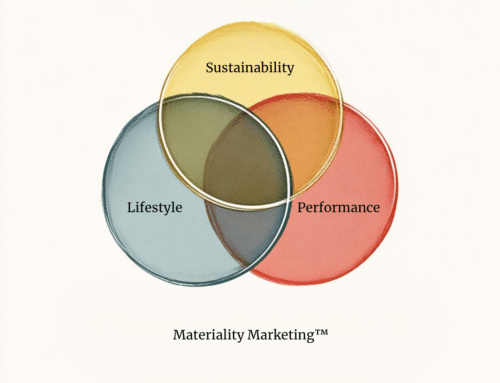Storytelling Through Performance + Lifestyle: The Secret to Building Products Brands That Sell
October 21, 2025
Why Great Products Still Struggle to Connect
Here’s the thing — building products are rarely bad. Most of them perform exceptionally well. They’re engineered, tested, certified, and backed by data.
So why do so many strong products fail to gain market traction while others — often with identical specs — become household names?
Because facts don’t sell; stories do.
The best brands in the building industry understand that the product’s performance is only half the story. The other half is how it makes people feel — safer, prouder, freer, or simply smarter for choosing it.
That’s the bridge between performance and lifestyle, and Draper DNA builds it better than anyone.
The Two Sides of the Story
1. Performance: The Rational Promise
This is the foundation. Performance is what earns credibility.
Manufacturers invest millions in testing, certification, and innovation — and for good reason. Architects and contractors buy based on trust, reliability, and measurable performance.
Your performance story must prove you’re worth specifying:
-
Third-party testing (ASTM, UL, LEED).
-
Warranty longevity and service track record.
-
Ease of installation and jobsite efficiency.
-
Return on investment and lifecycle cost.
But here’s the trap: Performance alone doesn’t create preference.
If your entire marketing story is built on data, it will only ever appeal to one side of the brain — the rational, skeptical, detail-driven side. You’ll earn respect, not love.
2. Lifestyle: The Emotional Connection
Lifestyle is what makes people choose your brand over an equal alternative. It’s the emotional narrative that connects your product to identity, aspiration, and belonging.
For homeowners, it might be:
“The deck where family memories happen.”
For contractors:
“A product that installs cleanly every time — because reputation matters.”
For architects:
“A design element that elevates both aesthetics and performance.”
Lifestyle stories shift the focus from what the product is to what it means.
They create loyalty, advocacy, and differentiation — the elements competitors can’t copy.
The Draper DNA Formula: Performance + Lifestyle = Connection
Where most agencies pick one lane, we merge both.
At Draper DNA, we believe marketing for building products must live in two dimensions simultaneously: functional credibility and emotional resonance.
Our approach fuses both through a system we call Materiality Marketing™ — the art of weaving performance data, sustainability, and lifestyle storytelling into one cohesive brand experience.
Here’s how it works:
1. Start with Truth
We audit your technical strengths, certifications, and test data. Then, we turn those facts into storytelling fuel — proof points that support a narrative, not drown it in jargon.
Example:
Instead of “ASTM D882 certified tensile strength,” say
“Built to handle real-world stress — so your project lasts a lifetime.”
2. Define the Human Benefit
Every technical feature should ladder up to a human outcome.
-
Fade resistance → “Color that never apologizes.”
-
Sound insulation → “Peace inside, no matter what’s outside.”
-
Easy installation → “More weekends off for your crew.”
When you connect performance to emotion, you’re no longer marketing a product — you’re marketing quality of life.
3. Visualize the Experience
Lifestyle visuals matter as much as words. We build campaigns where performance meets aspiration — pairing technical proof with human emotion.
Imagine:
-
A homeowner standing on their new deck as sunlight hits the boards — tagline: “Engineered for moments that last.”
-
A contractor leaning against a clean, finished wall — “Built right. Installed once.”
-
An architect presenting a project — “Design without compromise.”
4. Amplify with Data
We measure how emotional storytelling impacts lead generation and conversions.
Brands that balance emotional and rational messaging consistently outperform those that rely on specs alone.
In one Draper DNA campaign for a national siding brand, engagement rates doubled when we reframed product claims into emotional benefits. Contractors responded to pride and trust. Homeowners responded to beauty and simplicity. Both responded to authenticity.
Why Most Agencies Miss This
Because they’re either:
-
Too technical — talking to engineers, not humans.
-
Too emotional — ignoring the professionals who drive real sales.
At Draper DNA, we speak both languages fluently.
We know the performance details that convince an architect, and the emotional triggers that win a homeowner.
That’s what we mean when we say: We Speak Fluent Building Products.
Case Study: The Performance Story That Became a Lifestyle
A national decking manufacturer approached us with a problem. Their marketing was packed with proof: tensile strength, fire rating, and thermal stability. Yet dealers said homeowners were buying competitors with “nicer ads.”
We shifted the focus:
-
Performance stayed — but we linked it to human outcomes.
-
“Tested to 180°F” became “Cool underfoot, even in July.”
-
“20-year fade warranty” became “Color that stays true, like the memories made on it.”
The campaign delivered:
-
48% higher engagement on social.
-
32% increase in dealer orders.
-
And a 21% uptick in homeowner referrals within six months.
Data + design + emotion = results.
The Draper DNA Advantage
We’re not a lifestyle agency trying to sound technical.
We’re not a technical agency trying to sound human.
We are Draper DNA — the bridge between performance and lifestyle.
We translate the proof engineers build into the stories homeowners remember.
That’s how building products brands grow awareness, credibility, and preference — all at once.
Conclusion: Facts Tell. Stories Sell.
In the end, great building products deserve great storytelling.
Performance earns trust. Lifestyle earns love.
Brands that master both don’t compete — they lead.
That’s what Draper DNA builds:
Marketing that speaks to both sides of the brain — and every layer of the channel.





